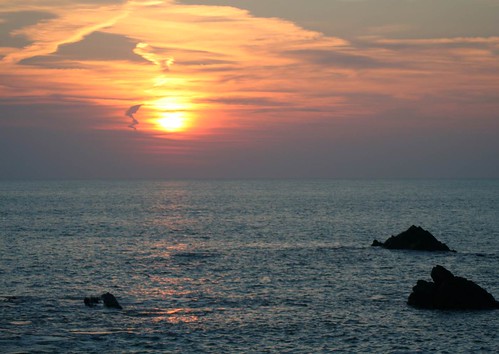
• Disappointed…
• Auto white-balance fail! •
sunset photography can present colour and detail problems.
Click image to view large
• Disappointed – Auto-white-balance fail! • By Netkonnexion on Flickr ![]()
Flat sunset and poor colour – a beginners special.
My first digital sunset failed and it affected my confidence. It was flat, desaturated and the detail was lost. In this quick tip we look at how to fix it in one easy step…
The Sunset sunset photography fail!
In the picture above the flat, desaturated appearance caught me out. I sat there, after a 60 mile drive, for over an hour, and this flat failure was all I produced from hundreds of shots. For months I had this hanging over me. I had never had this problem with film. What was going wrong?
The problem was the auto white balance (AWB). In digital sunset photography the AWB tries to create a picture where the colours and the spread of light variations are balanced around a neutral grey. This reduces the shift in colour temperatures away from neutral. It has a very high impact on oranges and golden colours typical of sunsets (and sun rises). The upshot is you get a flat, cartoon-like, washed out colour range. This also reduces the detail in the sky.
The solution to the sunset photography fail?
Switch your colour balance to non-AWB settings. ‘Daylight’ AWB setting works well, giving realistic results.
However, if you select the ‘Cloudy’ setting this can have a spectacular pay-off. The ‘cloudy’ setting is used to off-set the coolness that clouds often give light. It warms the scene. So, if your sunset is already warmed by reds, oranges and golds the setting intensifies them.
You can intensify the colours in your sunset photography by using the White Balance ‘Shade’ setting. This adds an even greater warmth than the ‘cloudy’ setting. Be careful though, it can look unrealistically saturated. Run some test shots to be sure you have the right setting.
That’s it! Get your confidence back and increase the impact of your sunset photography in one easy setting.
Photokonnexion Photographic Glossary – Definitions and articles.
If you shoot with JPG, beware Auto-White Balance
White Balance Settings Explained


